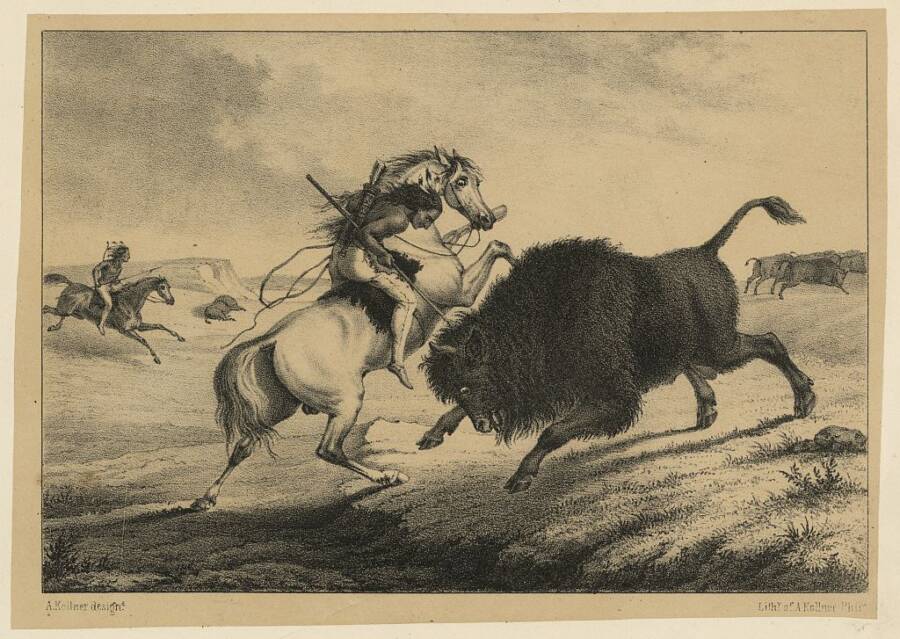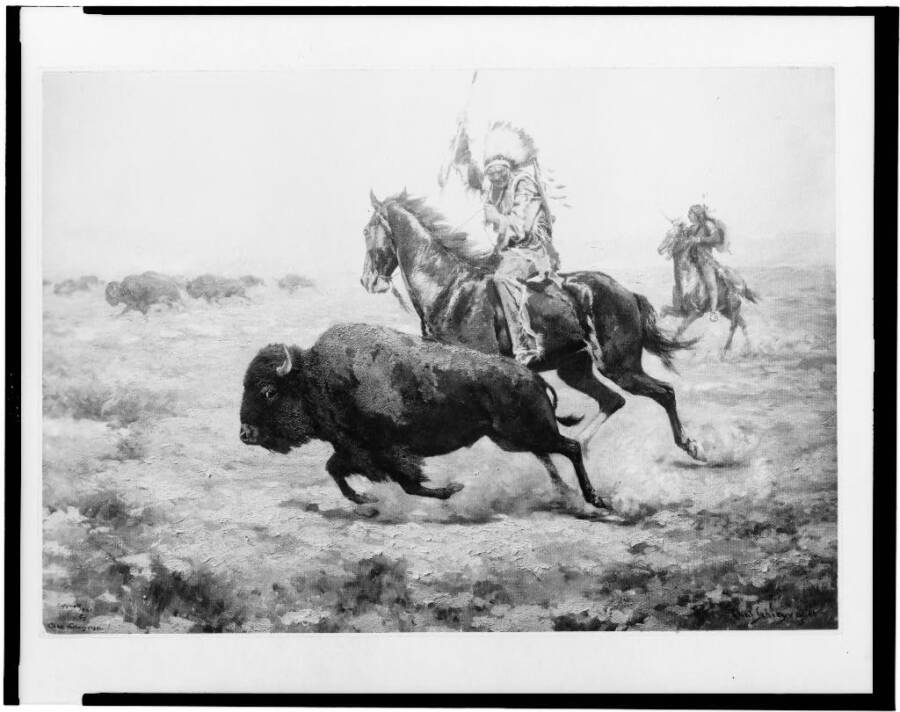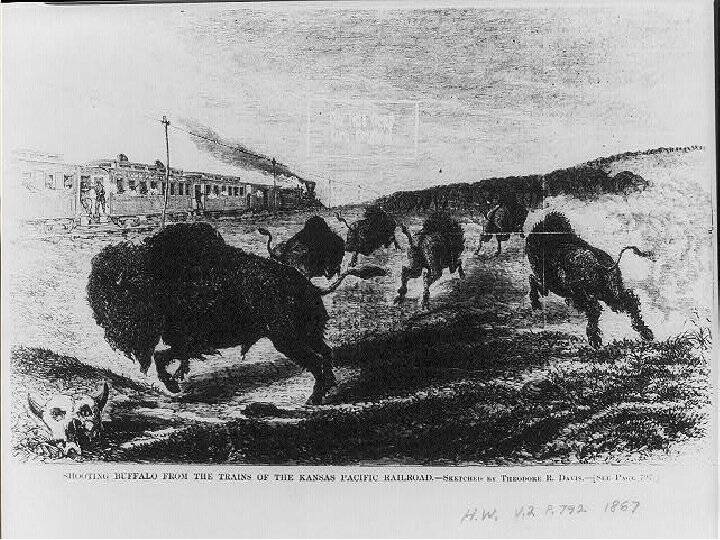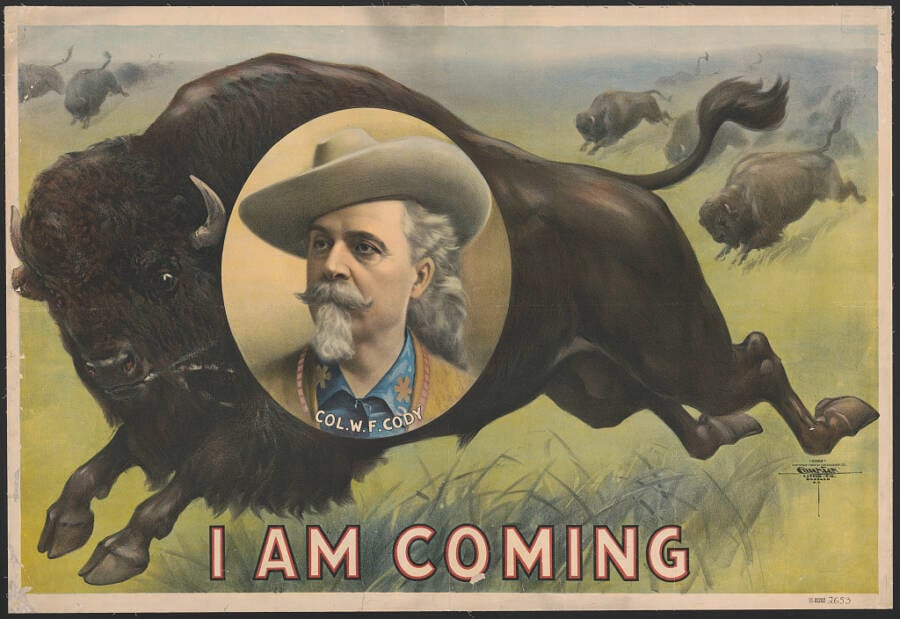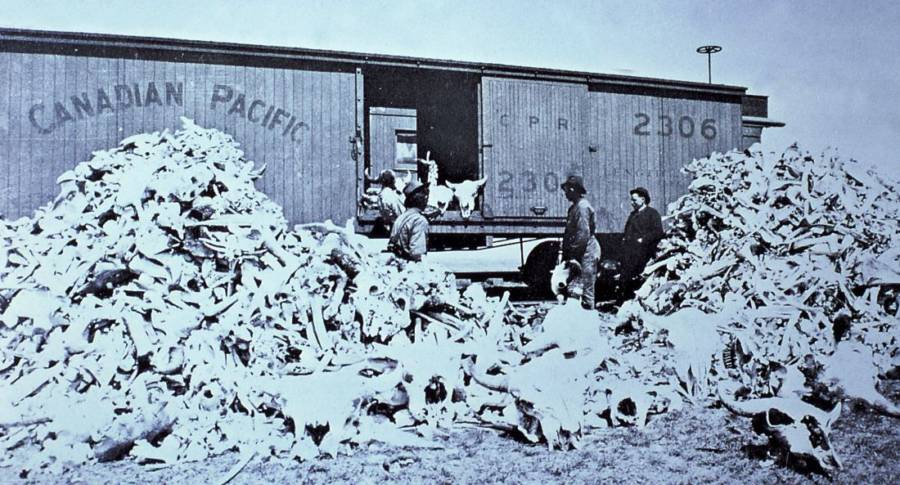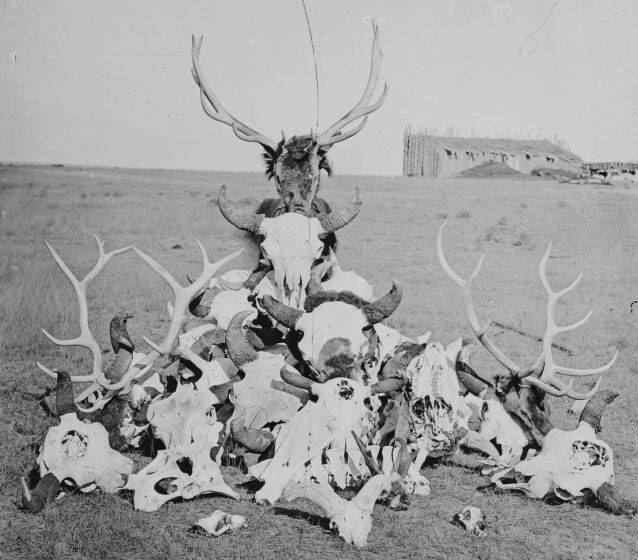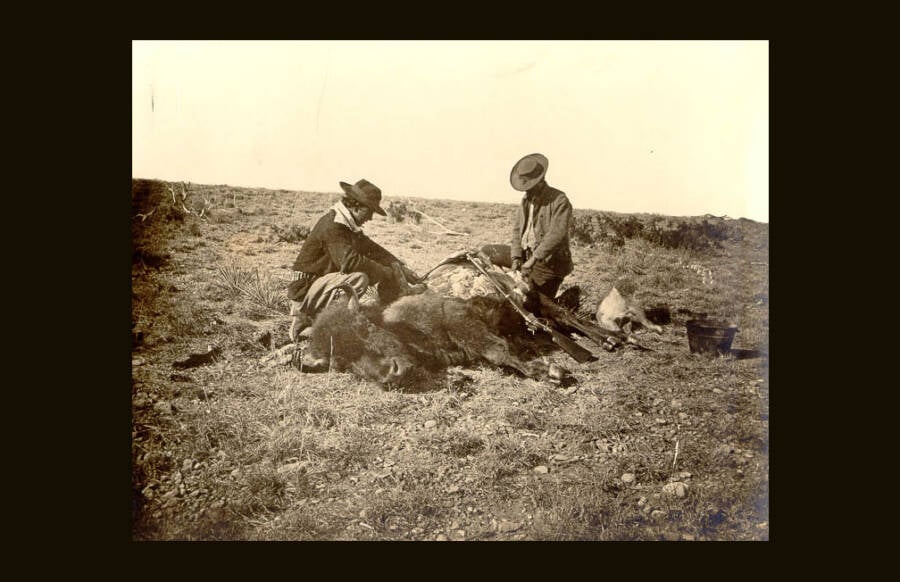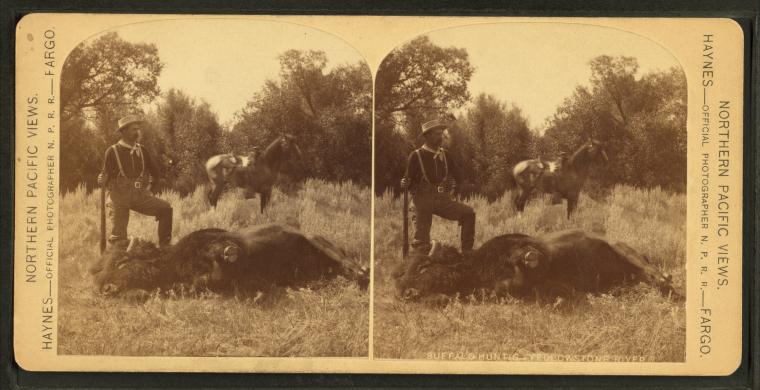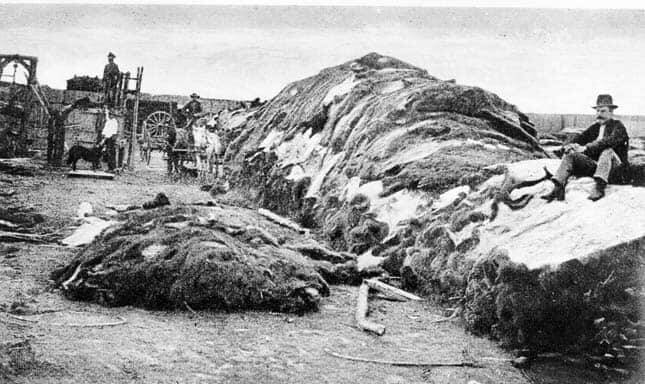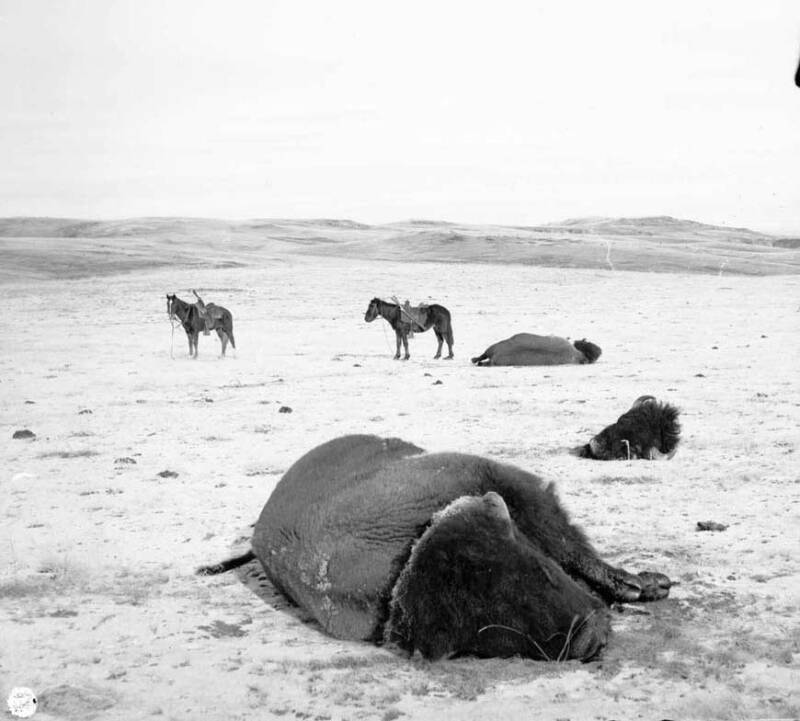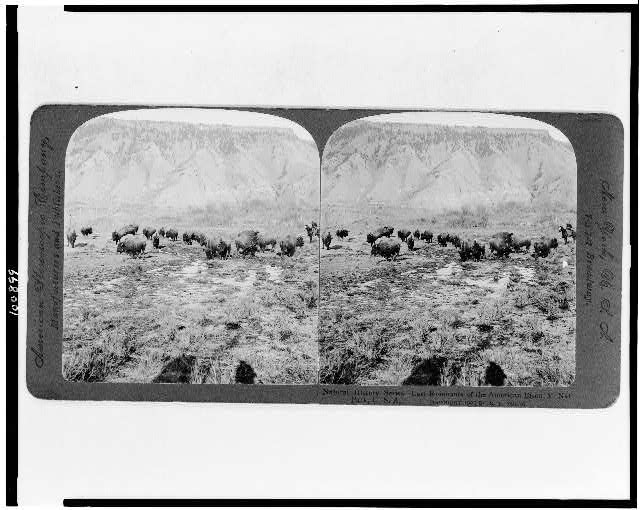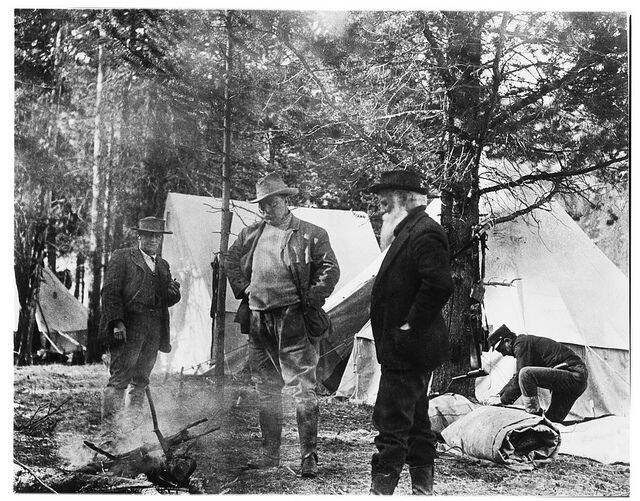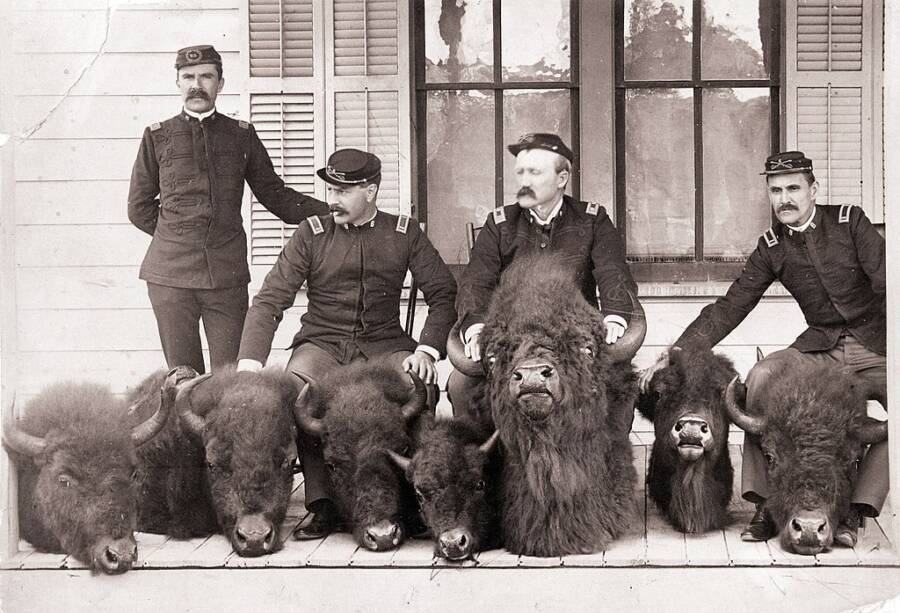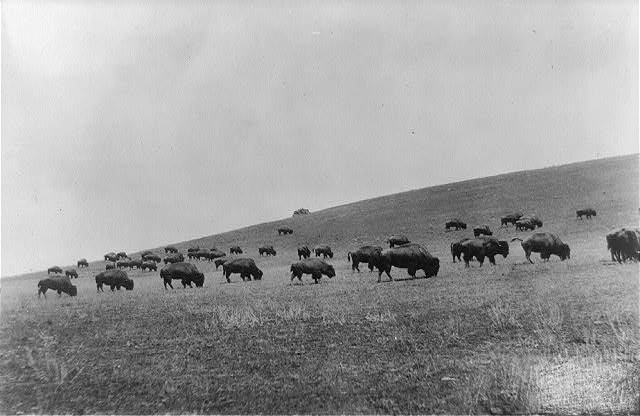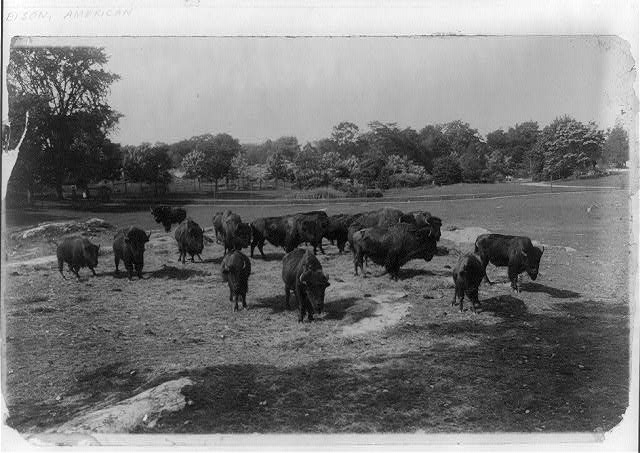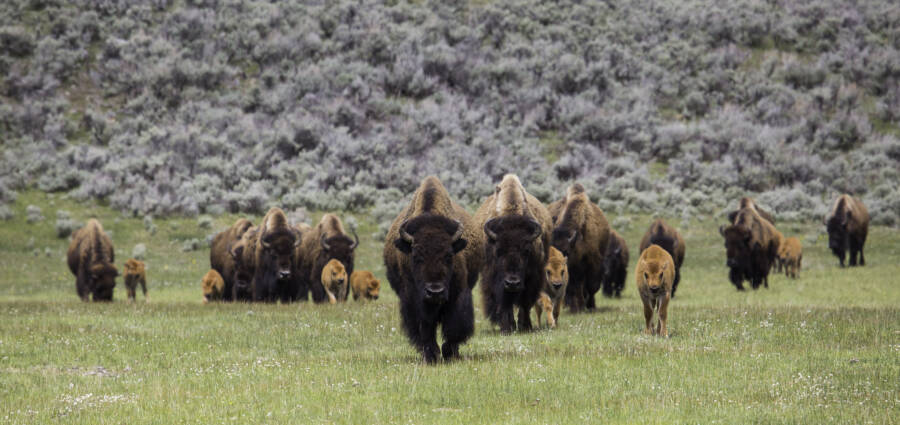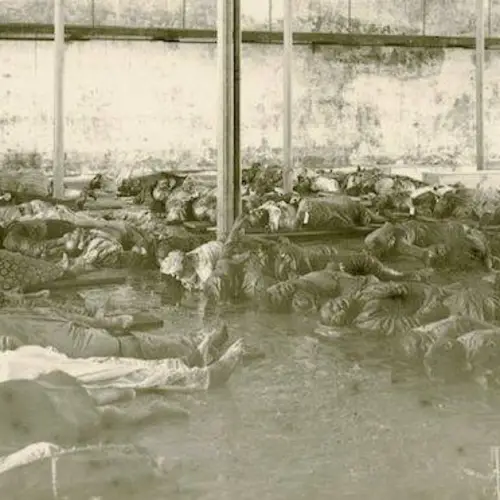European settlers in the Great Plains are estimated to have reduced the American bison population from 30 million to just 325 by the 1880s.
On a winter day in December 1867, a train took off from Fort Hays, Kansas. Rumbling across the prairie, it slowed as it neared a herd of bison. Then a hail of bullets exploded from the train windows, shattering the peace of the Great Plains and felling the beasts where they stood. That was just the beginning of the American bison extermination.
By the 1860s, bison had roamed the Great Plains for 10,000 years. They numbered in the tens of millions, charging across the flat landscape in such a cacophony that people called it the "Thunder of the Plains." For generations, they'd provided Native Americans with food, clothing, shelter, and even spiritual imagery.
But everything began to change after the Civil War. The railroad was snaking west, bringing with it new towns, trains, telegram lines, and eager settlers. Determined to allow western expansion to continue, the U.S. government decided to clear the way of Native Americans.
To do this, they set their sights on the bison.
The 19th-Century Extermination Of The American Bison
Killing bison to force Native Americans off the Plains was never explicit U.S. government policy. However, the government endorsed it.
Civil War hero General William Tecumseh Sherman, tasked with protecting railroad construction in the postwar years, assured his former commander Ulysses S. Grant, "We are not going to let thieving, ragged Indians check and stop the progress."
A year later, he wrote to his colleague in arms, Major General Philip Sheridan. He said that Native Americans would never give up their lifestyle until the buffalo were gone.
"I think it would be wise to invite all the sportsmen of England and America there this fall for a Grand Buffalo hunt, and make one grand sweep of them all," Sherman declared.
Public DomainPhotos of the bison published in 1887, now a GIF.
American settlers were already hunting the bison. Pouring west with guns, they frequently shot at the animals from trains for sport. "Buffalo" Bill Cody even made a career out of killing bison, which became a popular feature of his Wild West shows. In two years, he slaughtered 4,000.
But bison hunting intensified after the completion of the transcontinental railroad in 1869. Hunters arrived west in droves, many hoping to make fast money by killing the bison. Some of these "buffalo runners" even got their bullets from U.S. army commanders. By the 1870s, they were killing an average of 5,000 bison a day.
"These men have done more in the last two years, and will do more in the next year, to settle the vexed Indian question, than the entire regular army has done in the last forty years," Sheridan said with satisfaction.
"They are destroying the Indians' commissary... for a lasting peace, let them kill, skin, and sell until the buffaloes are exterminated. Then your prairies can be covered with speckled cattle."
Policymakers in Washington D.C. also approved of killing bison as a means to move Native Americans off the Plains and onto reservations.
"The civilization of the Indian is impossible while the buffalo remains upon the plains," Secretary of Interior Columbus Delano stated in 1873.
"I would not seriously regret the total disappearance of the buffalo from our western prairies, in its effect upon the Indians, regarding it as a means of hastening their sense of dependence upon the products of the soil and their own labors."
When some lawmakers pushed back and tried to pass a law that would outlaw white people from killing bison, Congressman Omar Dwight Conger put things in explicit terms.
"[Bison] trample upon the plains upon which our settlers desire to herd their cattle and their sheep," he argued in 1874. "They range over the very pastures where the settlers keep their herds of cattle. They destroy the pasture. They are as uncivilized as the Indian."
In the end, the government sat back and let hunters kill millions of bison. By the end of the 19th-century, just a few hundred remained in the wild.
The Impact Of The Hunt And American Bison Today
Mass hunting of the bison nearly drove the species to extinction. It certainly devastated tribes across the Great Plains, whose average height dropped inches. Even today, tribes that historically relied on bison have higher rates of suicide and lower per-capita incomes.
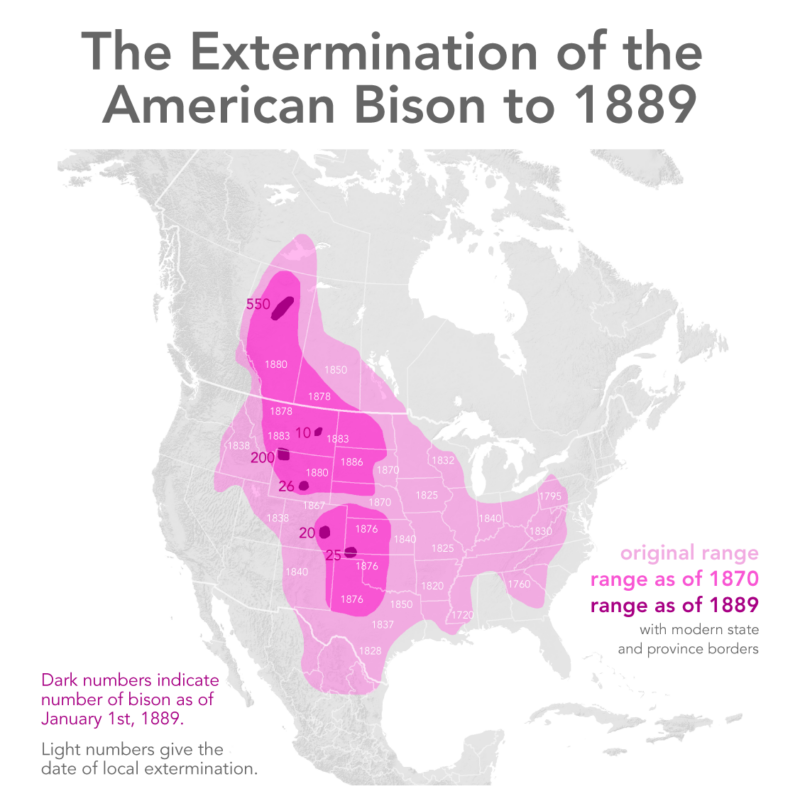
Wikimedia CommonsA map showing how the range of bison shrank over time.
But attempts have been made to restore the bison. Shortly after millions died, zoologist William Hornaday formed the American Bison Society in 1905 in hopes of creating more wild herds. President Theodore Roosevelt even supported his work by pressuring Congress to create wildlife preserves.
Once a bison hunter himself, Roosevelt grew alarmed at how quickly the bison had disappeared from the United States.
"Few indeed are the men who now have or evermore shall have, the chance of seeing the mightiest of American beasts, in all his wild vigor, surrounded by the tremendous desolation of his far-off mountain home," Roosevelt wrote in his journal.
Thanks to efforts by people like him, there are today more than 500,000 bison in America. They live in national parks like Yellowstone and on wildlife preserves. Still regal, they prowl the plains and nose at the grass like their ancestors did.
But their limited numbers mean that they'll never sweep the landscape by the millions, snorting in the cold and tossing their fearsome heads. Never again will the "Thunder of the Plains" roar and rumble across the sea of grass.
Those days are gone, never to return.
After reading about the extermination of the bison in the 19th-century, flip through these colorized photos of the old west. Or, look through these haunting photos of the Civil War.
